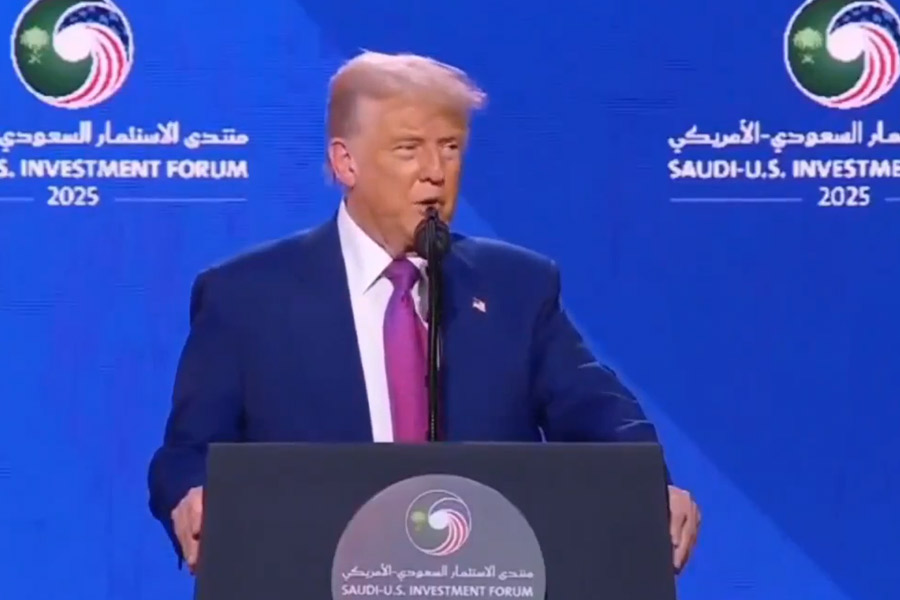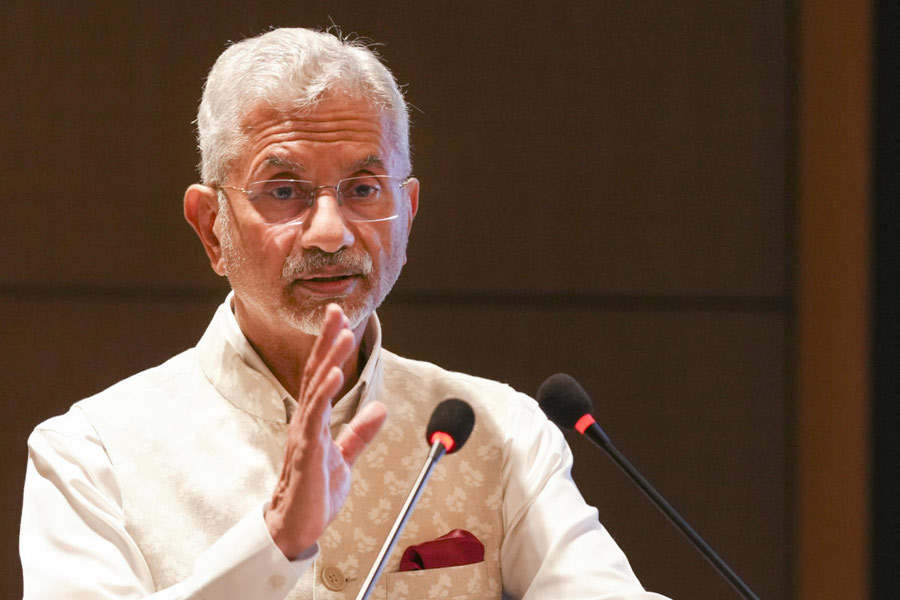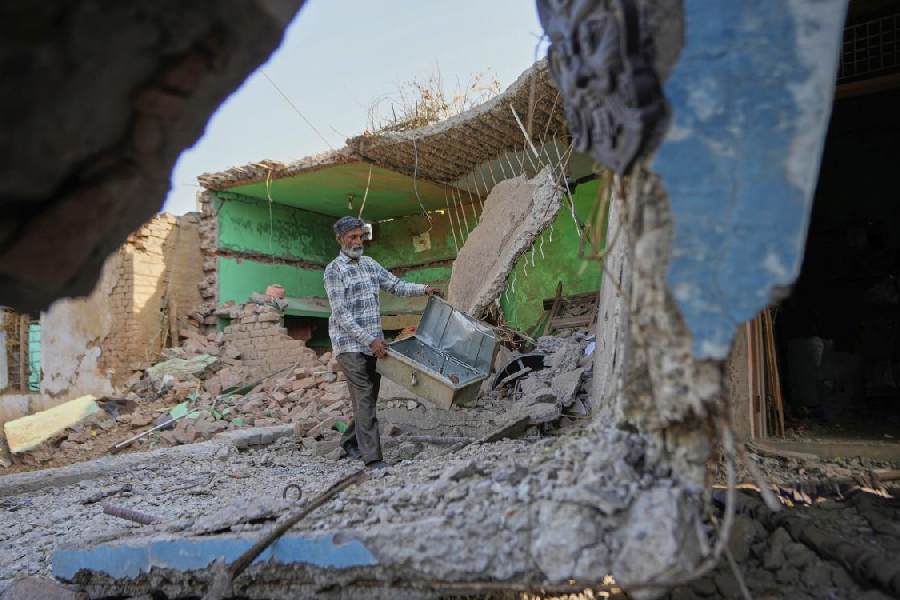 |
| The February 2 Metro report on fakes at the Government Art College exhibition of “Tagore works” |
I was delighted to read about the Tagore fakes. I am also personally trying to fake a few Kandinskys [Russian painter Wassily Kandinsky], so I can have a joint show sponsored by the Indian Art College, to teach the snotty-nosed Government Art College a lesson.
But then I think the Indian Art College has ceased to exist even after I tried fighting for its resuscitation decades ago when their entire dysfunctional student faculty spread communist campaign and propaganda posters across the floors and, like famous Jamini Roy copyists, gathered around one great Marxist-Leninist or Stalinist or Maoist poster and churned, or rather hammered and sickled or cycled out copies you couldn’t tell from the original.
These days I hear frightening rumours that things in Calcutta and Bengal may change. Ever since my college days I have laughed my guts out at strangers who gulped down adulterated colas and other soft drinks on our railway platforms and even from shady Park Street vendors who knew whom to dupe. I have seen a garage in Calcutta where large vats of carcinogenically rubicundised pumpkin paste are filled into bottles of ketchup with famous labels on them.
In Bangla-desh you can be incarcerated for ripening fruit with carbide but here in the west, there are deep pits in public view where this is done for every description of fruit and vegetable. Outside markets you see vegetables being dyed green. We use urea to whiten puffed rice and muri-wallahs procure mustard oils that taste of engine oil to artistically twirl and dribble over thongas of jhaal muri.
I am told, in other words, “allegedly”, we come a close second to Delhi in the adulteration of medicines and that after the upcoming elections we might unravel the mysteries of petrol and diesel mafias that have been in operation on our state’s borders for donkey’s years and are far more exploitative, devious and dangerous than the ones we’ve read about in Maharashtra, and discriminatory enough not to self-immolate while killing bureaucratic foe.
In the world of Bengali cinema we churn out deplorable works of unspeakable mediocrity and cultural rubbish that are bad frame-to-frame copies of Telugu and Tamil and Hindi hits. Oh sure, some of these are legally purchased so the prostitution of one of Bengal’s most celebrated art forms is all above board. In other words, it’s all unadulterated piffle that rakes in money at the box office and plunges our aesthetics into abysmal depths of depravity and decadence.
A few years ago, I had a dealer bring me a large Hemen Mazumdar canvas. One look at it and I knew it was a fake. I asked him jokingly to take it away and find a gullible fool or a sucker. He got stroppy and argumentative and explained its authenticity just like the Government Art College has done today by tracing its ownerships and antecedents to hallowed families and households. I tolerated what he had to say and asked him to leave. He churlishly turned to me and said, “Why don’t you make me an offer? You know a lot about these things, Sir; I have a lot to learn from you”. I had had enough.
I went to my desk, opened a drawer and pulled out my trusted Swiss Army Knife that has opened many a can of luxury while I’ve trekked through blizzards and unfriendly terrain in the Himalaya, opened its largest blade and slashed a diagonal rip across the painting in front of me. I now told the dealer to take it back to its owner and to ask him to call me and let me know what he would like in terms of a monetary compensation. I never heard from him and saw neither hide nor hair of him ever again.
The coup de grace occurred about a decade ago when a very rich banker friend of mine called me long-distance to verify the authenticity of a Jamini Roy he was purchasing. He was buying it from someone I knew very well. I told my friend how impossible it was to do this sort of thing over the telephone (those days there was no Skype to help), but he insisted I try. So, rather stupidly, I went from one salient feature of Jamini Roy’s style to the next and to my astonishment and relief every feature was picture perfect. He paid lakhs for it and loved the painting and promised me lamb chops on the Champs Elysees (at a cheap bar like Calcutta’s Olympia that I loved) and pommes frites as we browsed through art in the dim alleys of Montmartre.
About a year later, I was in his part of the world and he enthusiastically invited me over to his three floor double duplex apartment that has fabulous art hanging on every wall. He took me over to the Jamini Roy. My heart missed a beat and then pumped thunderously against my chest. It was a fake: sold by one friend of mine, to another. I said nothing. I also never had the heart to ask him to pay for the lamb or chips with sauce whose tartar would now taste sour.
But let me dip my finger into the icing and lick it in front of your mesmerised intellects. Many many years ago, there was a painting that looked like a work of one of India’s greatest old masters. I won’t name the artist. Unfortunately, the work had no signature and so was impossible to truly authenticate and sell. A tragedy. But years later, I saw the painting hanging on the wall of an enormously rich ass. It had a signature that had been beautifully faked. Millions had changed hands. A travesty?
In conclusion,Vincent Van Gogh’s famous Sunflowers that hangs at the National Gallery in London and the Yasuda Sunflowers that Van Gogh apparently personally faked five months after he had painted the first, and the Amsterdam Sunflowers that have been traced back to Van Gogh’s family, says a lot about a painter who is the most widely forged on this planet and yet never sold a painting in his life.
Now that property development has given birth to a new breed of vulgar millionaires, not only will art sell but fakes and forgeries will sell better. Watch out for the Kandinskys that once put our Gurudev on the world map of art.
And last but not the least, unscrupulous artists will become as rich as all the other scamsters and match-fixers and politicians and contractors we worship and admire and would love to ‘copy’, and never get caught.
But the last laugh in this glorious chapter of contemporary art must surely belong with the ghost of our own national treasure, Jaminibabu, who sat and bemusedly supervised his own copies and then signed them all into posterity.
Vision, that’s what they call it. Good man.
Respond to this at ttmetro@abpmail.com











